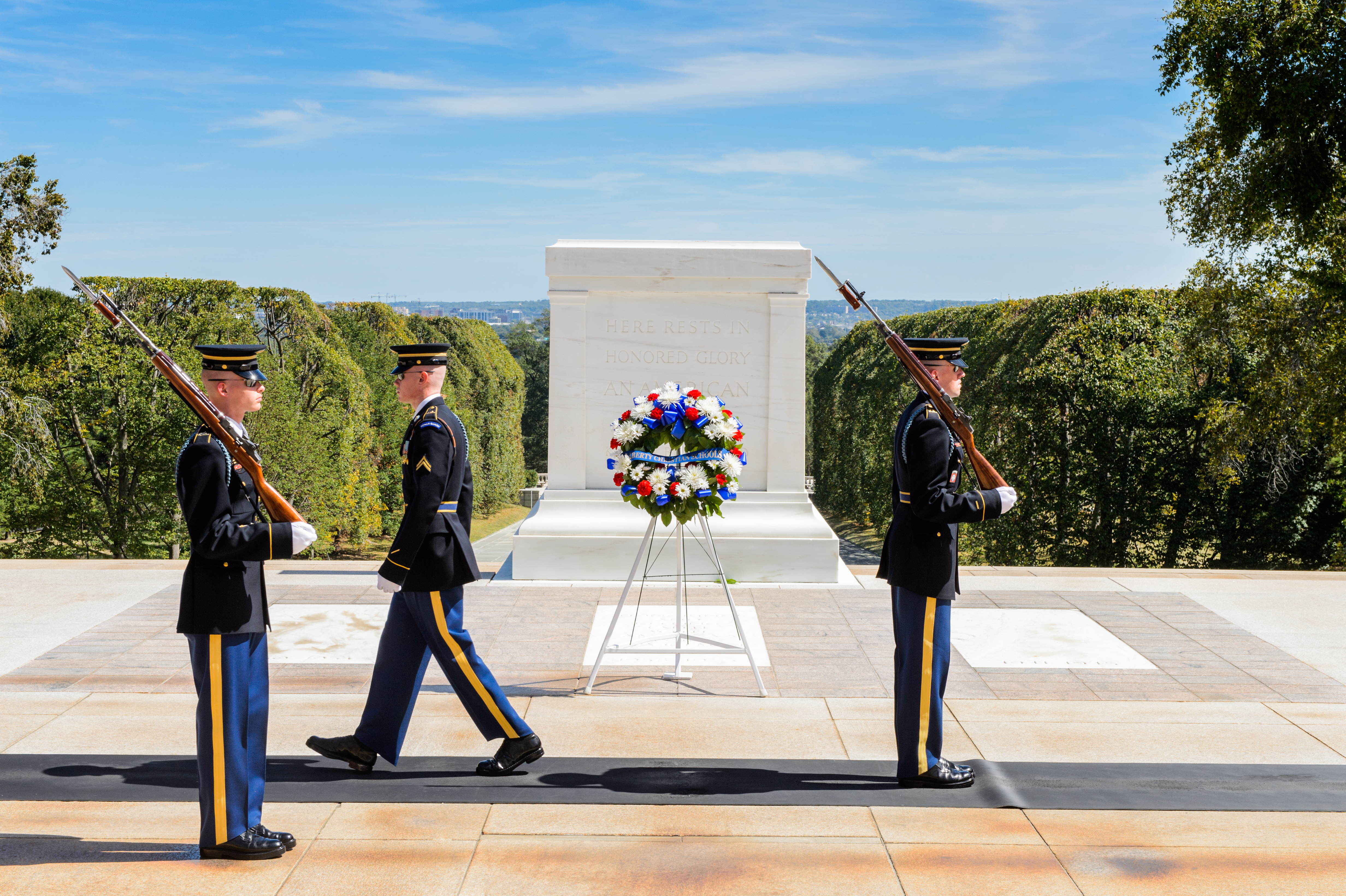Unknown soldier. After World War I (1914-1918), officials of the Allied countries found that the bodies of many soldiers killed in battle could not be identified. The governments of Belgium, Britain, France, Italy, and the United States decided to honor the memory of these soldiers. Each government chose a symbolic unknown soldier, buried the remains near the national capital, and built a monument in honor of the soldier. Belgium placed its unknown soldier in a tomb at the base of the Colonnade of the Congress in Brussels. Britain buried its unknown soldier in Westminster Abbey. France buried its unknown soldier beneath the Arc de Triomphe in Paris and keeps a flame always burning over the grave. Italy’s unknown soldier lies before the monument to Victor Emmanuel II, the first king of a united Italy, in Rome.

The unknown soldier of the United States was one of four war dead taken from American cemeteries in France. An American soldier, Sergeant Edward Younger, selected the soldier from these four. The remains were brought to the U.S. Capitol to lie in state. On Armistice Day (Nov. 11), 1921, they were buried in Arlington National Cemetery in Virginia, across the Potomac River from Washington, D.C. The tomb, completed in 1931, bears the inscription, “Here rests in honored glory an American soldier known but to God.”
Congress later directed that an “Unknown American” from each of three wars—World War II (1939-1945), the Korean War (1950-1953), and the Vietnam War (1957-1975)—be buried beside the Tomb of the Unknown Soldier (now called the Tomb of the Unknowns). The World War II and Korean War unknowns were buried in marble-capped crypts at the head of the tomb on Memorial Day in 1958. The unknown serviceman of the Vietnam War was buried between them during a Memorial Day ceremony in 1984.
The World War II unknown was chosen from two unidentified soldiers by an American sailor, Hospitalman William Charette, in a ceremony aboard the cruiser Canberra off Norfolk, Virginia. The Korean War unknown was chosen by an American soldier, Sergeant Ned Lyle, from the unidentified dead of that war buried in the National Memorial Cemetery of the Pacific at Honolulu. The Vietnam War unknown was the only American serviceman killed in that war whose remains could not be identified. At the time of the ceremony, however, over 2,400 servicemen were still listed as missing. In 1998, DNA tests determined that the Vietnam War unknown was Michael Blassie, an Air Force lieutenant shot down over South Vietnam in 1972. Later that year, the remains of Lieutenant Blassie were moved to a veterans cemetery near St. Louis.
An amphitheater, built in honor of military forces killed in battle, stands near the tomb. Memorial Day services are held there each year. An honor guard from the 1st Battalion, 3rd U.S. Infantry Regiment, Joint Base Myer-Henderson Hall, Virginia, keeps a sentry on duty at all times. The sentry is changed every hour during the day between October 1 and March 31, and every half hour between April 1 and September 30. The sentry is changed every two hours at night.
